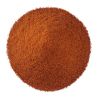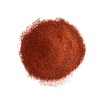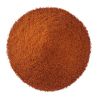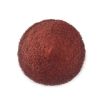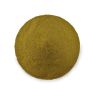ofi Chilies
Chilies Cultivation
Where are chilies cultivated?
Chilies are found all over the world, but the largest grower and producer of chilies is India, contributing 25% of the world’s total production. Today, India is known not just for growing the most chilies but also growing the hottest chilies on the market. The more mild capsicum varieties and blends, like paprika, chili pepper, and chili powder, are primarily grown in the southwestern United States, China, and Peru.
Applications of Chilies
So, what can chilis be used for? Chilis have many applications, including:
- Adding ancho chili powder to meat, vegetables, and beans for a moderate level of heat
- Blending cayenne red pepper powder with vinegar to create a liquid hot sauceSprinkling chili powder alamo into a barbeque sauce, taco blend, or chiliI
- Incorporating chili powder in sauces, rubs, dips and condiments
- Include paprika in applications where you want a deep red hue
History of Chilies
The history of chilies is very long — going back to 7000 B.C. Grown and cultivated as far back as 3500 years ago in North and Central America, Mexico, in particular, has long used these flavorful and spicy fruits to add heat to their food. When Columbus first traveled to the Americas, he brought a variety of spices, including chili peppers, back to Spain, where it became a common spice used in many European cuisines.
Over the years, chili plants have been cultivated to create new varieties through cross-breeding. Now, there are more than 400 different varieties of chilies found all over the world today. In 1912, Wilbur L. Scoville, a pharmacist, created a new method to measure the pungency of chilies, known as the Scoville Organoleptic Test. Today it is still the most accurate method for determining a chili’s flavor profile.
Types of Chili Products
Are you looking for ways to incorporate chilis on a larger scale? There are several products to help you get started.
Ancho Chili Pepper: Our ancho chili pepper powder is brick red and made from ripe poblano peppers that have been dried and powdered. Slight smoky in taste, they have a moderate heat level.
Cayenne Red Pepper 30K: This bright red powder packs a high-heat flavor with just a hint of fruitiness. Use this spice as a bold addition to Southern, Caribbean, Mexican, South American, and Indian cuisines. Shop Bulk Cayenne Red Pepper 30K Now→
Chili Pepper: Olam’s famous chili pepper powder brings red hot flavor to any recipe. Ideal for making any food spicy hot, our bulk chili pepper is also great in spicy Chinese or Korean sauces.
Chili Powder Alamo: This medium roast chili powder is a finely ground, brick red blend that includes Olam chili peppers, salt, and a dash of cumin. Shop Bulk Chili Powder Alamo Now→
Chili Powder S&S Santa Irradiated: This medium roast chili powder has a medium heat flavor profile and is flame red in color. A great addition to dips, marinades, and dressings, this chili powder combines chili peppers, garlic powder, salt, and a dash of cumin.
Chili Powder: What do you get when you blend our medium heat chili peppers with salt and cumin? The perfect base for your next pot of chili, meat rub, or plant-based protein dish. Also perfect for flavoring corn side dishes.
Chili Powder La Mesa Irradiated: Low-heat and caramelized, this chili powder blend includes chili peppers, salt, and garlic. Great for sauces, meat preparations, and plant-based proteins.


